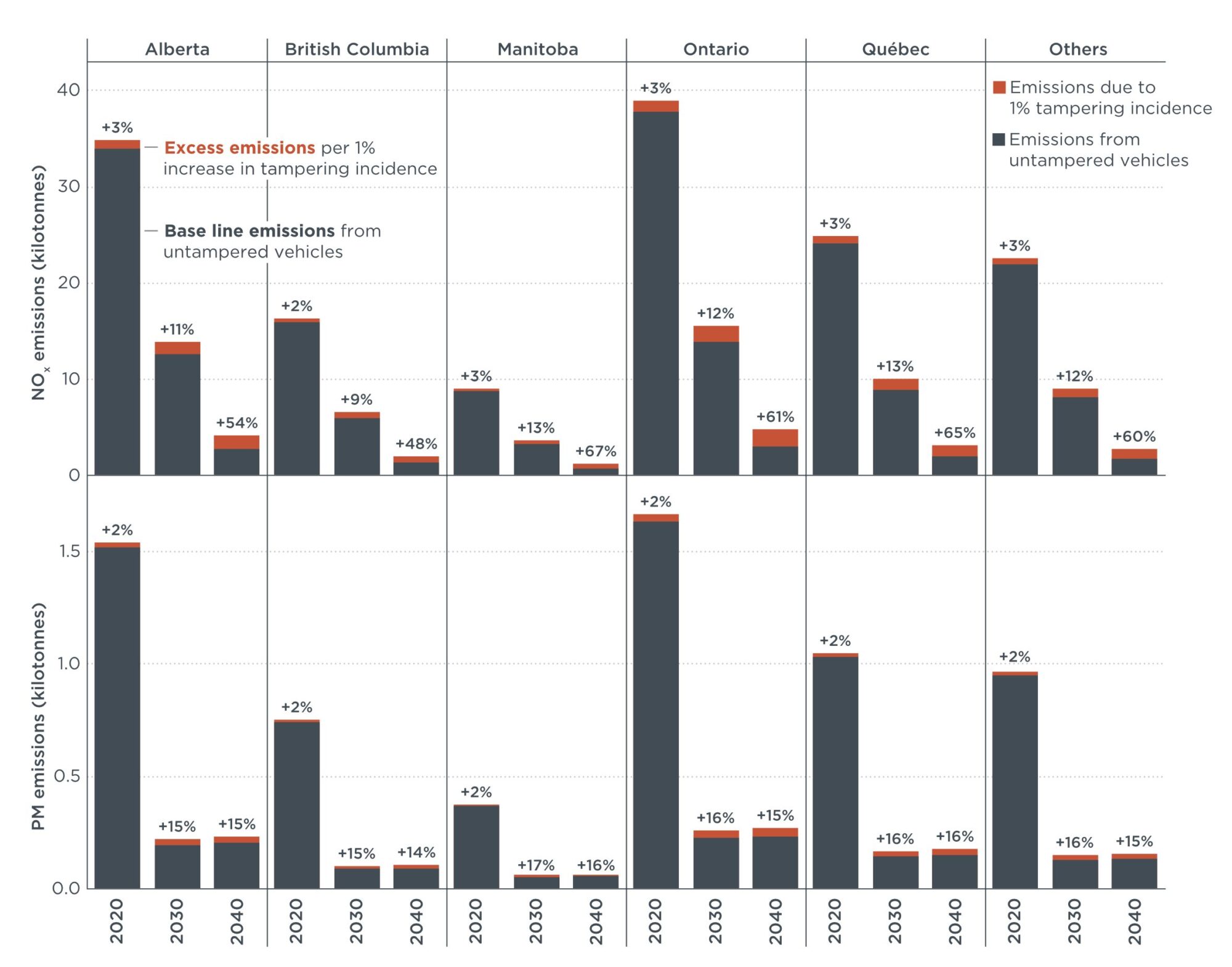Current state of NOx emissions from in-use heavy-duty diesel vehicles in the United States
Report
Heavy-duty emissions control tampering in Canada
This study provides a holistic assessment of the issues that facilitate emission control system tampering in heavy-duty vehicles in Canada and estimates the impacts of tampering on the emissions inventory and public health.
Tampering significantly increases emissions compared to a counterfactual case where no tampering occurs. Through analysis of the best-available data, each percentage-point increase in the tampering rate in 2020 increases fleetwide PM and NOx emissions by 2%–3%. In 2040, by which point nearly all vehicles in the fleet should meet US 2010 or later standards, each percentage-point increase in the tampering rate would increase fleetwide PM emissions by 14%–16% and NOx by 48%–67%, depending on the province. A tampering rate of 1% is associated with 690 excess premature deaths and 11,700 years of life lost over the next 20 years.
The explicit prohibition of tampering at the federal level, combined with adequate market surveillance and persuasive penalties, can serve as a strong deterrent against tampering. Inspection and maintenance programs with technical designs coherent with modern emission control systems have the potential to be an effective hurdle against tampering. Additional targeted market surveillance activities, such as the combination of remote sensing screening with subsequent roadside inspections, can be an effective measure to identify and penalize tampering.
Technology-forcing regulations that mandate the development and deployment of anti-tampering technologies can also increase the technology barrier to tampering. Such technologies include data authentication of emissions control components, anomaly detection through enhanced on-board diagnostics systems, and on-board monitoring and reporting of emissions related data.

Tailpipe NOx and PM emissions from medium- and heavy-duty vehicles by province in 2020, 2030, and 2040 (kilotonnes). Dark segments show baseline emissions under a scenario without tampering. Light segments indicate the percent increase in emissions associated with a 1% increase in the number of tampered vehicles on the road.
